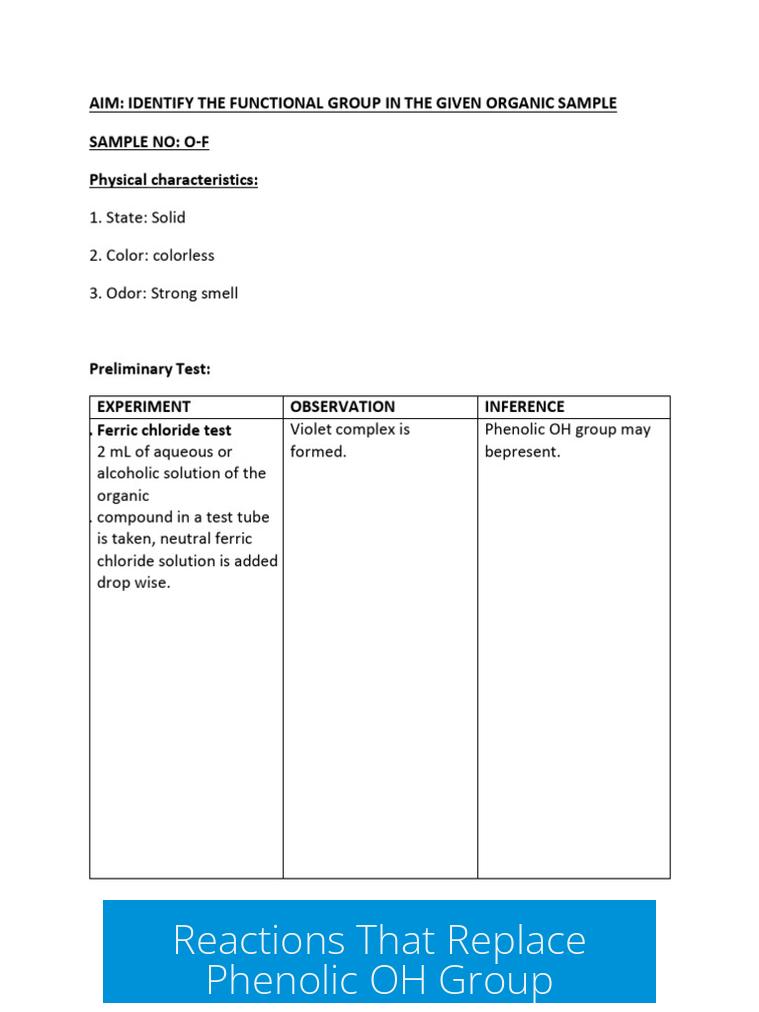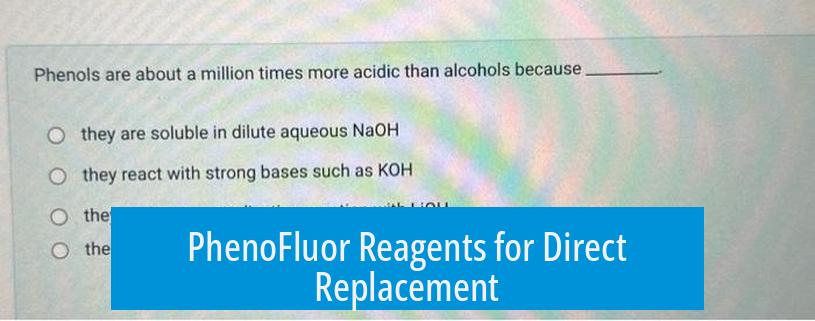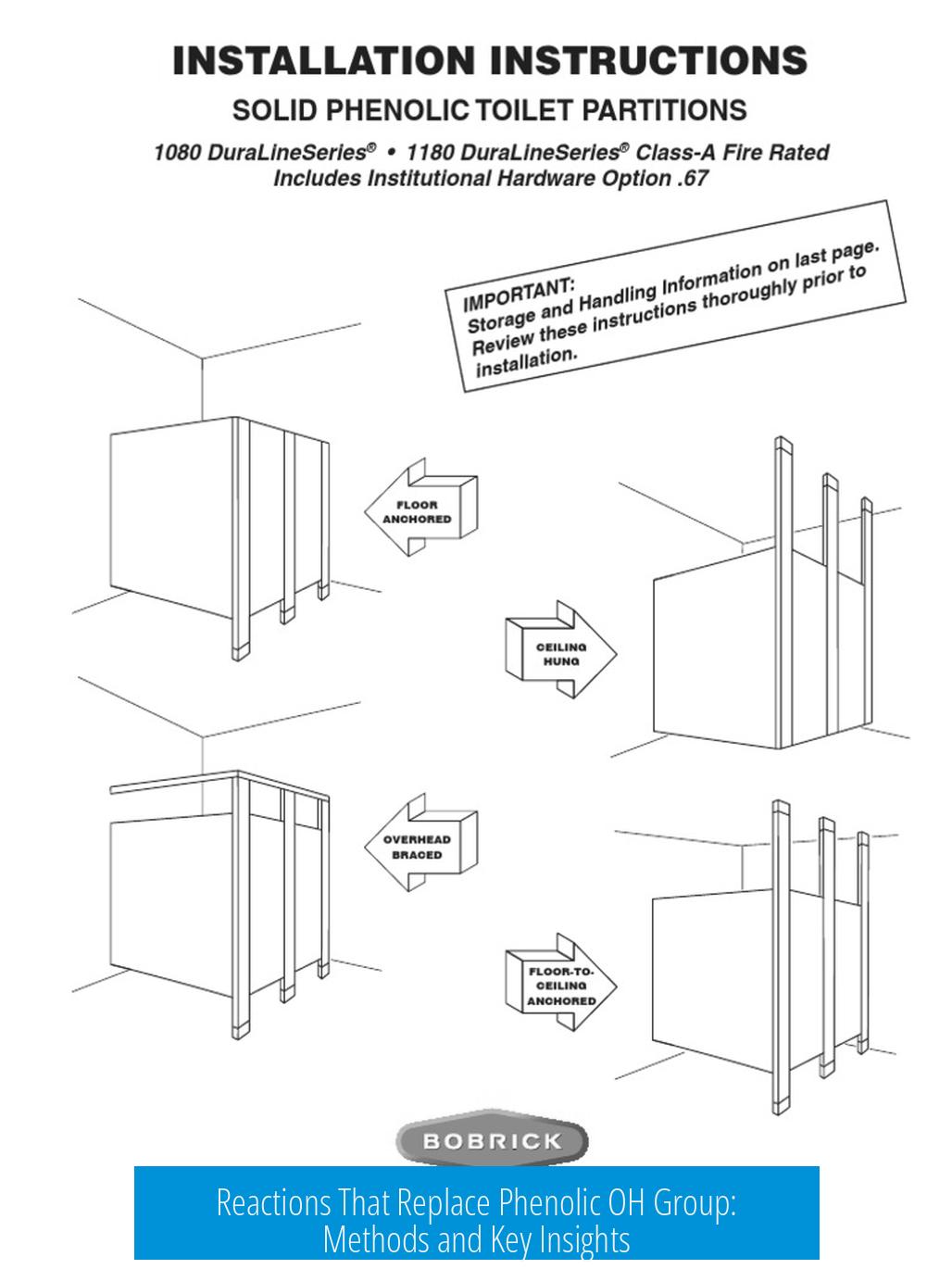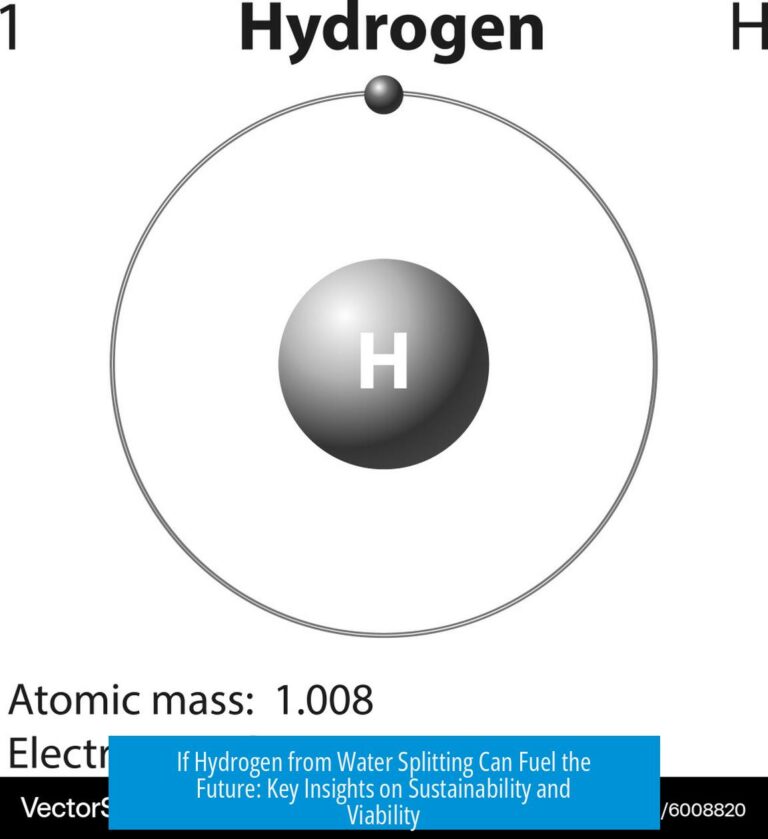Reactions That Replace Phenolic OH Group

Yes, there are several reactions capable of replacing the phenolic OH group with other substituents. The most common approach involves first transforming the phenol to a more reactive intermediate, such as a triflate, which then allows diverse substitutions through cross-coupling reactions. Some specialized reagents and rearrangements also achieve this transformation directly or indirectly.
Conversion to Triflates
Phenols readily convert into triflates using triflic anhydride or triflic chloride. This generates a phenyl triflate, a versatile intermediate. Subsequent palladium-catalyzed cross-coupling reactions enable replacement of the triflate group with a variety of nucleophiles, like amines, alkyls, or aryl groups. This method effectively replaces the phenolic OH with many substituents under mild conditions.
Newman-Kwart Rearrangement
The Newman-Kwart Rearrangement converts phenolic thiocarbamates into thiophenols through high-temperature heating. It transforms the oxygen functionality indirectly by exchanging the oxygen for sulfur, which can then undergo further modifications. While not a direct OH substitution, it serves as a strategic step to alter the phenol substituent.
PhenoFluor Reagents for Direct Replacement

Ritter’s PhenoFluor reagents present an elegant solution to replace phenolic OH with fluorine. This system facilitates direct nucleophilic substitution of the OH by F under controlled conditions. The reagent is designed to activate the phenol toward fluorination with high selectivity. Publications report efficient and clean conversion, expanding synthetic access to aryl fluorides.
Nucleophilic Aromatic Substitution (NAS)
NAS is generally ineffective for replacing phenolic OH groups. It is mostly used to transform aryl halides into phenols, not the reverse. Phenol substituents are poor leaving groups for nucleophiles except under extreme conditions or with strong electron-withdrawing groups ortho or para to the OH.
Hydrogenolysis (Reductive Cleavage)
Hydrogenolysis can remove the phenolic OH group by reductive cleavage, especially converting phenol into benzene. This reaction requires high temperatures (~400 °C), hydrogen gas at several bars, and a suitable hydrogenation catalyst. While effective, it is more a deoxygenation than a substitution reaction and demands specialized equipment.
Summary of Methods
| Reaction | Outcome | Key Features |
|---|---|---|
| Conversion to Triflates | Phenol → Aryl triflate → Cross-coupled product | Versatile, mild, broad substituents |
| Newman-Kwart Rearrangement | Phenol → Thiophenol | Indirect substitution, high temperature |
| PhenoFluor Reagents | Phenol OH → Fluorine | Direct substitution, selective fluorination |
| Nucleophilic Aromatic Substitution | Generally ineffective for OH replacement | Used to form phenols from halides |
| Hydrogenolysis | Phenol → Benzene (removal of OH) | Harsh conditions, reductive cleavage |
Key Takeaways
- Phenolic OH is often replaced by first converting to aryl triflates.
- PhenoFluor reagents enable direct OH replacement by fluorine.
- The Newman-Kwart Rearrangement converts phenols to thiophenols indirectly.
- NAS does not readily substitute phenolic OH groups.
- Hydrogenolysis removes OH but under harsh reductive conditions.
Can phenolic OH groups be converted to triflates for further reactions?
Yes. Phenols convert easily to triflates. This allows many types of cross-coupling reactions afterward. It is a common method to replace the OH group indirectly.
Is there a reaction that replaces phenolic OH with fluorine specifically?
Ritter’s PhenoFluor reagents replace the phenolic OH with fluorine. This method is well-documented and offers a clean fluorination of phenols.
Does the Newman-Kwart rearrangement replace the phenolic OH group?
The Newman-Kwart rearrangement modifies the phenol derivative. It does not directly replace the OH but rearranges related sulfur-containing groups on the aromatic ring.
Can nucleophilic aromatic substitution be used to replace the phenolic OH?
No. NAS typically transforms halides into phenols, not the other way around. It is not suitable for replacing phenolic OH groups.
Is hydrogenolysis effective in removing phenolic OH groups?
Yes. Hydrogenolysis can reductively cleave phenols to benzene. It requires high temperature and hydrogen pressure with a catalyst.





Leave a Comment